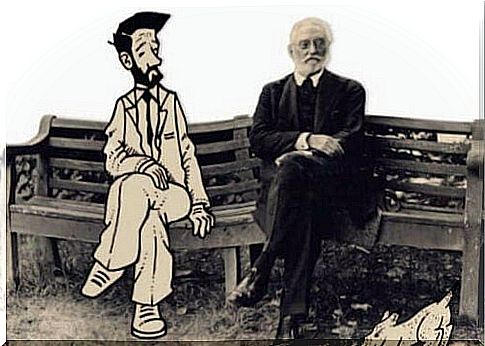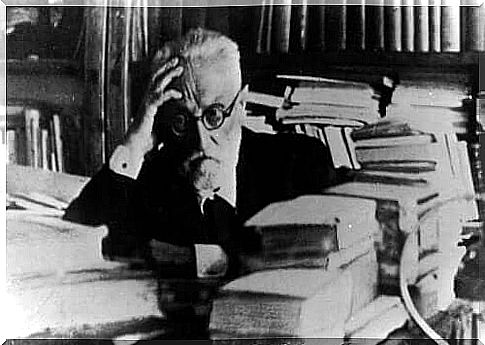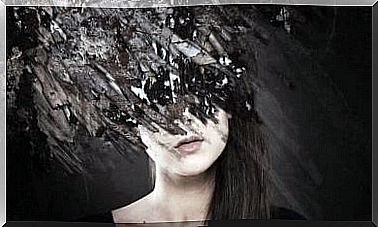Fog, A “nivola” By Unamuno

In 1914, Miguel de Unamuno published a rather peculiar novel, one which he preferred to classify as nivola, thus avoiding the criticism that would arise if people compared it to other works. The name of the novel is Niebla in Spanish, but this nivola by Unamuno was translated into Fog in Norwegian. Today’s article will explore this literary jewel.
Unamuno is one of the most important authors in Spanish literature. He was born in Bilbao in 1864 and died in Salamanca in 1936. Today, his name resonates as one of the greatest novelists, and he is also one of the representatives of the generation of 1898 .
Through this work, Miguel gathers many of the ideas he presented in his earlier works. However, he does so here through the life of Augusto Pérez, the main character, whom he portrays as a wealthy man with a law degree. The story itself does not have many controversies, but the author tried to give it another dimension.
A new work that he himself would list under the category “nivola”, and not a novel, as people would conventionally describe it. Today’s article will reveal some of the keys to this book.

The controversy over the “nivola” of Unamuno
Something that will catch the reader’s attention early on is that the prologue is signed by Víctor Goti. He is one of the characters in the book. The author also makes a postprologue in which he states that the reader is not in the process of reading a novel, but a “nivola”.
To confuse everyone further, the epilogue tells about the events in the book. But from the point of view of Orpheus, the dog of the said Augusto Pérez.
It all begins when Augusto sees a woman he ends up falling madly in love with. He will try to get her attention with his limited resources, but she rejects him because she is already with someone else. However, she will eventually agree to meet, but only to take advantage of him. Finally, she writes to him on her wedding day and explains that it was all a hoax.
From this moment on, the reader witnesses an authentic revolution from a narrative point of view. Augusto is so unhappy that he plans to commit suicide. However, he is just the character in a play, and as such lacks the free will. Only Unamuno, the author, can make the final decision.
and so…
At that moment, what some know as the “fourth wall” breaks down. Thus, Augusto decides to talk to the author. Thus, he speaks directly to Unamuno.
The character ends up rebelling against the author and revealing his intentions. In this way, the author begins to wonder if he himself is a character from another fictional story. To what extent does he have free will? The goal is that when Unamuno begins to doubt its own freedom and reality, the reader will also question its own existence at the exact same moment. What if humans only exist in a dream? What if we’re just part of someone’s dream?
The scope of the novel is not only present in the plot, but in its ability to dialogue with the reality of the reader and the author. Therefore, Unamuno decides that the work will be part of a different genre classification. In a separate category packed with paratexts. By calling it nivola , he blocks the criticism that can put it in a category or compare it.
Realities and fictions in Fog, a “nivola” by Unamuno
Unamuno’s work is somewhat similar to Life is a Dream by Pedro Calderón de la Barca. In some ways, fiction is more real than the writers themselves, and for Unamuno, the characters have a life of their own. Thus, the reader makes them live, and what matters is how one experiences literature.
All of this is closely linked to the problem of immortality. That is, if you are what you dream of and everyone’s dream is just a normal reality, you can not say that it is real.
Unamuno read the works of Descartes and Calderón de la Barca. That was exactly where he got the inspiration for his book. This is reflected in Descartes’ rationalism, because in principle there is no reason to believe that what surrounds people is more than a dream.
Despite being a believer, Unamuno cannot rationally deduce the existence of God as Descartes does. Therefore, he has no reason to believe that what surrounds him is a dream or a deception. So how do you know if your senses are deceiving you?
Unamuno gathers all this complexity in Fog , and uses different regions. First, we have fiction, where the characters live. Then there is framed fiction, the place of the reality of fiction, which is the place where the fictional author lives. Finally, outside the book, within the framework, there is another reality: the reader’s reality.
With Fog , the author describes different plans that are intertwined. The author ends up taking on the role of a character when he meets Augusto. In other words, the reader is before the reality of reality, which is the world around them, and on the other hand a fictional reality where Unamuno is. Finally, the characters are in the fiction of fiction.

Several philosophical aspects of the Mist of Unamuno
As you might expect, Tåke is about basic questions about free will. It is seen from two perspectives: The first is found in the fictional unit, where the character arises if they are free.
It is Augusto who wants to commit suicide, but finds out that Unamuno does not allow it, so he can not do it because he is simply a character. At this point, the same doubt arises in the reader’s mind.
The characters are born from a language, from an inheritance. This is why you are not free to think what you believe, and the two possibilities arise again: God does not exist, and reality is nothing but the dream that people dream. Or that God exists and humans are just a divine dream.
Augusto is fighting for his life. It may be fictitious, but it is after all his. In his despair, the character of Augusto announces that the readers will also die, and that the book is ultimately a metaphor for the very existence of man.
Conclusion
Finally, what is a “nivola”? Well, it’s a novel where the characters are not defined before, but are created as the novel unfolds. The creator does not have an outlined plan for what is going to happen, just like in life itself.
The goal of “nivola” is none other than to confuse critics with a tendency to compare everything with other previous works. In this way, it gives a new genre without precedent, so there is nothing to compare it with.
For Unamuno, there is something false in a realistic novel. This is because it makes the reader believe that it is real and it is the genre of people who are not aware that their reality is a dream. However, the Mist of Unamuno is a way of understanding any novel. One that only exists when you think, activate and read. It is a confusing novel, where the prologue is also a novel where reality and metafiction are mixed together in the text.









